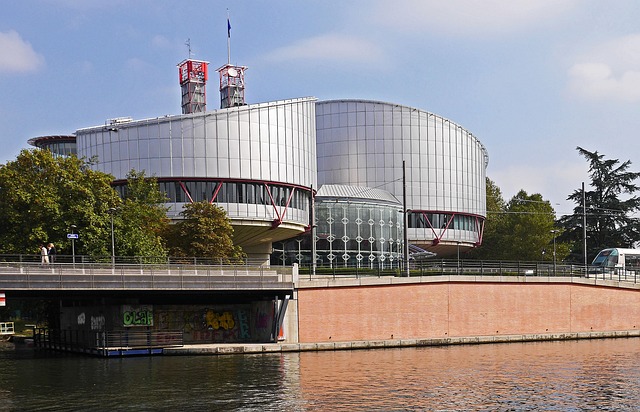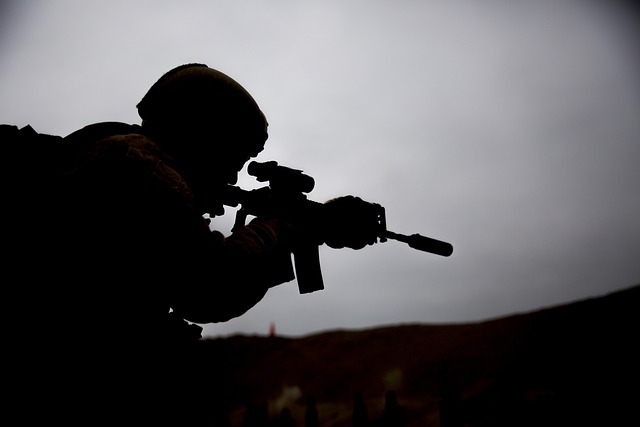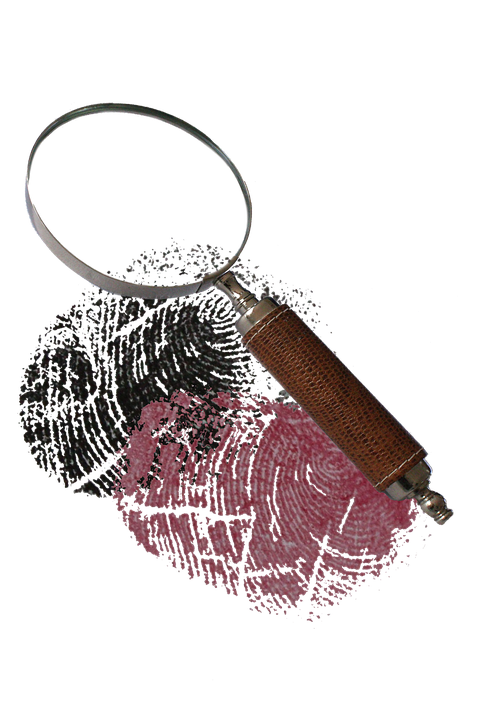6
0
7748
Фабула судового акта: Заявник, Ю. Чжан (КНР), навчався в одному з українських вищих навчальних закладів.
У травні 2009 року на пікніку група китайських студентів (включно із Заявником) стала учасницею конфлікту із чотирма українцями, внаслідок якого одного з них (М.) в ході бійки було поранено шампуром. У лікарні М., який згодом помер, стверджував, що зазнав нападу несподівано і вважає, що нападником міг був Заявник. Друзі померлого, які спочатку однозначно не вказували на Заявника як на винуватця поранення, згодом змінили свої показання і під час впізнання вказали на нього як на особу, що поранила М.
Заявника було затримано за підозрою у вбивстві М. Жоден із допитаних китайським громадян не бачив, як було поранено М., проте частина з них стверджувала, що була поруч із Заявником під час бійки, і що Заявник однозначно не завдавав поранень М. Також існували показання проти іншого громадянина КНР, зокрема деякі свідки бачили, як він тримав шампур під час бійки.
Районний суд відправив справу на дорозслідування, проте суд апеляційної інстанції скасував таке рішення, вказавши, що необхідності у дорозслідуванні немає. У 2011 році районний суд засудив Заявника за вбивство до дванадцяти років позбавлення волі.
Заявник оскаржив рішення в апеляції, посилаючись на те, що проти нього не було доказів, окрім як неоднозначних показань друзів померлого. Суд апеляційної інстанції скасував рішення та направив справу на дорозслідування. Після дорозслідування районний суд повторно передав справу слідству, оскільки здійснені дії були неповними і поверхневими. Після набрання чинності новим КПК розслідування завершили, а Заявнику було повідомлено про підозру. Районний суд засудив Заявника до дванадцяти років позбавлення волі, апеляційний і касаційний суди залишили таке рішення без змін. Заявника було звільнено у 2016 році, після чого він повернувся в КНР.
Заявник стверджував, що у йому не було забезпечене право на справедливий судовий розгляд. Європейський Суд наголосив, що хоча стаття 6 Конвенції гарантує право на справедливий судовий розгляд, вона не встановлює будь-яких правил про допустимість доказів, оскільки це є предметом регулювання національного законодавства. При вирішенні питання про справедливість розгляду слід звертати увагу на те, чи було Заявнику надано можливість оскаржити докази і заперечувати проти їх використання. ЄСПЛ констатував, що основними доказами, які послугували для засудження Заявника, були непослідовні свідчення друзів померлого, спочатку вони не висловлювали жодних підозр щодо Заявника.
ЄСПЛ, посилаючись на свою прецедентну практику, відзначив, що протиріччя між показаннями свідка, наданими в різний час, дають підстави вважати показання свідка недостовірними та такими, що мають невелику доказову цінність. Національні суди звернули увагу на недоліки доказової бази, проте реально їх не було усунуто навіть після дорозслідування. Не було здійснено жодних заходів для того, щоб розшукати і повторно допитати китайських студентів, які покинули територію України та показання яких могли мати вплив на справу Заявника. Внаслідок застосування судами норм нового КПК, показання свідків захисту не було враховано, а всі показання надходили від сторони обвинувачення – чим було порушено рівність сторін судового розгляду.
З огляду на вказане, ЄСПЛ дійшов висновку щодо порушення статті 6 § 1 Конвенції, інші скарги Заявника окремо розглянуті не були.
Аналізуйте судовий акт: «Де Томмазо проти Італії» [ВП] (De Tommaso v. Italy [GC]), заява № 43395/09
«Биков проти Росії» [ВП] (Bykov v. Russia [GC]), заява № 4378/02
«Нечипорук та Йонкало проти України» (Nechiporuk and Yonkalo v. Ukraine), заява № 42310/04
«Хусейн та інші проти Азербайджану» (Huseyn and Others v. Azerbaijan), заява № 35485/05
«Каверзін проти України» (Kaverzin v. Ukraine), заява №23893/03

FOURTH SECTION
CASE OF ZHANG v. UKRAINE
(Application no. 6970/15)
JUDGMENT
STRASBOURG
13 November 2018
This judgment will become final in the circumstances set out in Article 44 § 2 of the Convention. It may be subject to editorial revision.
In the case of Zhang v. Ukraine,
The European Court of Human Rights (Fourth Section), sitting as a Chamber composed of:
Paulo Pinto de Albuquerque, President,
Ganna Yudkivska,
Faris Vehabović,
Egidijus Kūris,
Iulia Antoanella Motoc,
Carlo Ranzoni,
Péter Paczolay, judges,
and Marialena Tsirli, Section Registrar,
Having deliberated in private on 23 October 2018,
Delivers the following judgment, which was adopted on that date:
PROCEDURE
1. The case originated in an application (no. 6970/15) against Ukraine lodged with the Court under Article 34 of the Convention for the Protection of Human Rights and Fundamental Freedoms (“the Convention”) by a Chinese national, Mr Yu Zhang (“the applicant”), on 20 January 2015.
2. The applicant was represented by Mr A.V. Podkopayev, a lawyer practising in Kharkiv. The Ukrainian Government (“the Government”) were represented by their Agent, Mr Ivan Lishchyna.
3. The applicant complained that the criminal proceedings against him had been unfair and unreasonably lengthy.
4. On 30 November 2017 the Government were given notice of the application. It was also granted priority treatment under Rule 41 of the Rules of Court.
THE FACTS
I. THE CIRCUMSTANCES OF THE CASE
5. The applicant was born in 1983 and lives in Tianchang, the People’s Republic of China.
6. At the time of the events the applicant was an undergraduate economics student at Kharkiv National University, Ukraine.
7. On 1 May 2009 a group of about fifteen Chinese students, including the applicant, were having a picnic. When they were about to finish, four Ukrainian men (D., Sa., Su. and M.), who were picnicking nearby, approached them to get some beer. The Ukrainians were clearly drunk. D. took a knife from the Chinese students’ table and threw it in the river on the pretext that it was a weapon and there was no place for it there. M., who appeared less drunk than his friends, was friendlier and the applicant gave him a bottle of beer. All four drank the beer and returned for more. Apparently, they offered the Chinese students a small folding knife instead of the one that had been thrown away, but their offer was declined. D.’s behaviour was particularly insulting and indecent: he undid his trousers and showed his genitals to everyone around him, including girls. The applicant gave the Ukrainians another bottle of beer and the group of Chinese students started packing up. M. filmed the events on his smartphone. The last thing recorded was one of the Chinese students, subsequently identified as W., taking two metal skewers out of a plastic bag.
8. At some point a fight started between the two groups. They later blamed each other for beginning it. In the course of the fight M. was stabbed in the back with a metal skewer.
9. Sa. took hold of one of the Chinese students, Ch. When the police arrived, Sa. stated that he had seen Ch. stabbing M. in the back with a folding knife and confirmed his statement in writing the same day. According to the report of the police officer on duty, Su. and D. were so drunk that it was impossible to question them. As for the victim, he was unconscious.
10. The applicant had been waiting for the police together with the four Ukrainians and some of his companions (several others had run away). None of the Ukrainians expressed any suspicions about the applicant and he eventually left with his friends.
11. On 2 May 2009 M. was questioned in hospital. He submitted that he had been stabbed unexpectedly in the back and that he had not seen who had done it. When he had fallen down, he had seen three Chinese men stepping over him, including the applicant. M. remembered the applicant because he appeared bigger than the other Chinese men and had spoken some Russian. M. considered that, most probably, it had been the applicant who had injured him.
12. On the same day Sa. changed his initial statement and submitted that he had seen “one of the Chinese [men], who [had] appeared bigger than the others and called himself Yura [the applicant], jump on [M.’s] back and stab him with a metal skewer”.
13. On 4 May 2009 M. died of his injury in hospital.
14. On the same day Su. told the police he had seen one of the Chinese men, who had appeared bigger than the others, stab M. with a metal skewer.
15. During an identification parade conducted that day Sa. and Su. pointed at the applicant as the one who had injured M.
16. The applicant was arrested that day on suspicion of M.’s murder.
17. On 6 May 2009 one of the Chinese students, W., speaking in the presence of a lawyer and with the aid of an interpreter, made a statement of surrender to the police. He stated that he had accidentally injured one of the Ukrainians with a skewer and had run away because he had been scared. He was sorry for what had happened.
18. On 8 May 2009 W. repeated his confession, adding that the applicant had done everything possible to prevent the conflict.
19. On an unspecified later date W. retracted his confession and submitted that he had only slightly injured D. and Su. with a metal skewer, but not M.
20. The investigation established that the Chinese students had initially had six metal skewers. Only four of them, packed in a plastic bag, were discovered. The two skewers taken by W. from the bag shortly before the fight were never found.
21. In the course of the pre-trial investigation twelve Chinese citizens made witness statements describing the events prior to, during and after the fight. None of them had seen who had injured M. or how it had happened. Nor had anybody seen the applicant holding a metal skewer at any point. To the contrary, some witnesses among the Chinese students submitted that they had been next to the applicant during the fight and that he had not been the one who had injured M.
22. Furthermore, several of the Chinese witnesses told the police that W. had been particularly nervous after the incident, had destroyed the clothes he had been wearing on 1 May 2009 and had asked his parents for a considerable amount of money.
23. On an unspecified date the investigation was declared completed and the Kharkiv Kyivskyy District Court (“the Kyivskyy Court”) started the trial.
24. On 15 January 2010 the Kyivskyy Court ordered an additional pre‑trial investigation. As stated in its ruling, several people had seen metal skewers in W.’s hands, but nobody had seen the applicant holding a skewer, let alone stabbing M. Sa. had eventually retracted his statement of 2 May 2009 about seeing the applicant stab M. and specified that in fact he had not seen the injury being inflicted on M. He explained that when pointing out the applicant he had been “driven by [his] emotions”. Furthermore, while D. and Su. considered the applicant guilty of injuring M., it was established in the court hearing that none of them had seen how that had actually happened. The trial court further found unconvincing the conclusion reached by the pre-trial investigation that W. had inflicted light injuries on D. and Su. with a metal skewer, but that it had been unlikely that he might have also injured M. Next, the court referred to the statement of the police officer who had been on duty on 1 May 2009, that the applicant had been there all the time after the arrival of the police and that he had been calm, clean and without any injuries. The officer further submitted that the Ukrainians had indicated that it was Ch. who had wounded M. and they had handed him over to the police. Ch. did not speak Russian well. After being provided with an interpreter, he had maintained his innocence. The investigator could not explain how suspicion had fallen on the applicant. He submitted that somebody from the criminal investigation department had told him that the applicant was the perpetrator, but he could not remember exactly who. Lastly, it was observed in the court ruling that although some of the Ukrainians’ witness statements had identified the applicant as appearing bigger than his companions, it was clear that there had been several other Chinese students who had appeared bigger and heavier than him. The investigation had failed to make any assessment of that point.
25. On 25 March 2010 the Kharkiv Regional Court of Appeal (“the Court of Appeal”) quashed the above-mentioned ruling, concluding that all the issues it raised could be clarified in the course of the trial and that an additional pre-trial investigation was not necessary.
26. On 26 September 2011 the Kyivskyy Court found the applicant guilty of murder and sentenced him to twelve years’ imprisonment. It relied on the statements of Sa. and Su., who claimed to have seen the applicant “hanging on [M.’s] back” shortly before the latter had shouted that he had been stabbed. The court also relied on the statements of D., who stated that he had seen the applicant running away from the victim with Ch. The court concluded that two metal skewers had been used in the fight. Given that W. had injured D. and Su. with one of them, he could not also have stabbed M. W. could not be examined in court as he had left Ukraine. The Chinese students gave their account of the fight. However, the court did not consider it credible and expressed the opinion that they had been trying to help the applicant.
27. The applicant appealed, submitting, in particular, that his conviction lacked any evidential basis apart from the controversial and speculative statements of M.’s friends. The prosecutor also lodged an appeal, considering the sentence to be too lenient.
28. On 26 March 2012 the Court of Appeal quashed the judgment and remitted the case for additional pre-trial investigation owing to numerous flaws and omissions. It observed in particular that no effort had been made to establish the motive for the murder. It was clear from the evidence in the case file that both the applicant and M. had been friendly and that both of them had tried to avoid the conflict. Furthermore, the appellate court pointed out that the statements of D., Sa. and Su., on which the first‑instance court had based the applicant’s conviction, had been contradictory, inconsistent and speculative. They could not therefore be interpreted as conclusive evidence of the applicant’s guilt. The appellate court also considered the accusation against the applicant to be too vague as it had never been established where exactly M. and the applicant were situated prior to the incident. Nor had the exact mechanism of M.’s injury been established.
29. Following an additional round of pre-trial investigation measures, the case was sent to the Kyivskyy Court.
30. On 2 July 2012 the Kyivskyy Court held that the deficiencies pointed out by the Court of Appeal in its ruling of 26 March 2012 had not been rectified and that the additional investigation, like the one carried out earlier, had been incomplete and superficial. The case was therefore remitted once again for further pre-trial investigation.
31. On 20 September 2012 the Court of Appeal upheld the above‑mentioned ruling.
32. On 19 November 2012 the new Code of Criminal Procedure (“the CCP 2012”) came into effect, introducing many major changes in criminal procedure (see paragraph 45 below).
33. On 19 December 2012 the investigator announced to the applicant a “notice of suspicion”, that being the new procedure of opening criminal proceedings under the CCP 2012.
34. On the same date the pre-trial investigation was declared completed, and on 24 December 2012 the case was referred to the Kyivskyy Court.
35. On 24 July 2013 the Kyivskyy Court found the applicant guilty of murder and sentenced him to twelve years’ imprisonment. It relied in particular on the statements made by Sa., Su. and D. at the court hearing, which were identical to those summarised in the judgment of 26 September 2011 (see paragraph 26 above). The court observed that it was impossible to establish with precision the mechanism of the fatal injury to M. on the basis of the evidence of those witnesses. It held, however, that their statements had not been refuted by any forensic medical findings. The court also relied on M.’s testimony during the pre-trial investigation (see paragraph 11 above). At the same time, in spite of requests by the applicant, it refused to admit in evidence any of the statements of the other Chinese students, who had meanwhile left Ukraine and could therefore not be questioned in court. Only one Chinese student had not left the country and was questioned. However, his statement was of little evidential value, given that he had left the scene prior to the beginning of the fight and had not seen any of it. The Kyivskyy Court held as follows:
“... [Pursuant to Articles 85 and 86] and Article 95 § 4 of the CCP [2012], the court may only base its conclusions on statements received directly at the court hearing or in accordance with the procedure [established by] Article 225 of this Code, and is not entitled to base judicial decisions on statements made to the investigator or prosecutor, or to refer to such statements. The court therefore holds that the reference by the applicant and his lawyer to the witness statements documented in the investigation’s reports and made either to the investigator or to the prosecutor outside of court hearings and not in accordance with the procedure [established by] Article 225 of the CCP [2012], cannot be regarded as proper and admissible defence evidence.”
36. The trial court further held:
“..The court has no doubts regarding the circumstances of the case which it considers established ... The statements of the witnesses [Sa., Su. and D.] are consistent and corroborated by other evidence in these criminal proceedings.”
37. The applicant appealed. He submitted that the only evidence leading to his conviction had been the victim’s friends’ inconsistent and contradictory statements, which they had drastically changed on at least three occasions. The applicant emphasised that the trial court had not analysed either any of those contradictions or the reasons why the witnesses had changed their statements. Likewise, he complained, no assessment had been given to the contradictions between the above-mentioned witness evidence and the version of events given by the victim himself shortly before his death (see paragraph 11 above). He observed in particular that M. had been clear in his statement that the stabbing in his back had been a complete surprise for him and that he had never submitted that somebody had been “hanging on [his] back” as alleged by the witnesses.
38. The applicant also complained that the statements of twelve other Chinese people during the pre-trial investigation had been disregarded. He observed that, under Article 5 § 2 of the CCP 2012, the admissibility of evidence was to be assessed in the light of the CCP provisions in force at the time when that evidence was obtained. Furthermore, the applicant referred to Article 18 of Chapter 11 of the Transitional Provisions of the CCP 2012, which stipulated that the issue of the admissibility of evidence obtained prior to the entry into force of the new CCP was to be decided in accordance with the procedure applicable prior to its entry into force (see paragraph 45 below). In his case, he emphasised, all the evidence had been obtained while the old CCP 1960 had still been in force. Accordingly, he considered that the trial court should have been guided by provisions of the CCP 1960 when deciding on the admissibility of the evidence including the witness statements given by the Chinese students. Given that under the CCP 1960 evidence obtained in the course of a pre-trial investigation was admissible in criminal proceedings (see paragraph 44 below), the applicant complained that it had been unlawful and unfair to exclude the witness evidence for the defence and that by doing so the trial court had substantially aggravated his situation and had deprived him of the opportunity to defend himself.
39. On 27 November 2013 the Court of Appeal upheld the findings and the reasoning of the Kyivskyy Court’s judgment. It held in particular as follows:
“The [first-instance] court’s findings regarding [the applicant’s guilt] are concordant with the factual circumstances of the case. [They] are based on the evidence, which was explored in the court hearing and which is set forth in detail in the judgment. The trial court thoroughly verified [that evidence] and assessed it in an objective manner.”
40. The Court of Appeal did not comment on the applicant’s argument about the applicability of the CCP 1960 on the assessment of the admissibility of evidence.
41. The applicant reiterated his arguments in an appeal on points of law.
42. On 22 July 2014 the Higher Specialised Court for Civil and Criminal Matters found against him and upheld the lower courts’ decisions. It found no reasons to consider the investigation at the trial superficial or otherwise flawed. The Higher Specialised Court was silent on the applicant’s argument on the admissibility of the defence evidence in the light of the CCP 1960.
43. According to the information provided by the applicant, on 31 March 2016 he was released and he returned to China. The case file before the Court does not contain any further details in that regard.
II. RELEVANT DOMESTIC LAW AND PRACTICE
44. The relevant provisions of the Code of Criminal Procedure 1960 (“the CCP 1960”; repealed with effect from 20 November 2012) read as follows:
Article 65. Evidence
“Evidence in criminal proceedings is any factual information, on the basis of which the inquiry authority, the investigator and the court ascertain, in compliance with the legally established procedure, whether or not an act that is a danger to society has been committed, whether the person who has committed it is guilty, and any other circumstances relevant for the proper resolution of the case.
Such information shall be established from: witness statements, the victim’s statements, the suspect’s statements, expert reports, material evidence, reports on investigative and judicial actions, reports on detective and search activities with annexes, and other documents.”
Article 82. Reports on investigative and judicial actions and other information carriers regarding those actions
“Reports on investigative and judicial actions drawn up and documented in accordance with the procedure established by this Code, as well as information carriers, on which procedural actions are recorded with the use of technical means, are a source of evidence, as they confirm the circumstances and facts relevant for the resolution of a case.”
45. The relevant provisions of the Code of Criminal Procedure 2012 (“the CCP 2012”; in force since 20 November 2012) read as follows:
Article 5. Temporal scope of the [CCP]
“1. A procedural action shall be carried out, and a procedural decision taken, in accordance with the [CCP] provisions in force at the time it was initiated.
2. The admissibility of evidence shall be determined by the [CCP] provisions in force at the time the evidence was obtained.”
Article 85. Relevance of evidence
“1. Evidence is relevant if it proves or disproves, directly or indirectly, elements to be proven in criminal proceedings and any circumstances of relevance for those proceedings, as well as the reliability and the possibility of using other evidence or the lack thereof.”
Article 86. Admissibility of evidence
“1. Evidence shall be regarded as admissible if it has been obtained in accordance with the procedure established by [the CCP].
2. Inadmissible evidence shall not be used for taking procedural decisions. Nor shall the court rely on such evidence in delivering a judicial decision.”
Article 95. Statements
“1. Statements are information provided orally or in writing by a suspect, an accused, a witness, a victim or an expert, in the course of their questioning, in respect of circumstances within their knowledge that are relevant for the criminal proceedings ...
4. The court shall base its conclusions only on the statements made directly in hearings or obtained in accordance with the procedure established by Article 225 of [the CCP]. The court is not entitled to base judicial decisions on statements made to the investigator or prosecutor, or by reference to such statements.”
Article 225. Questioning a witness or victim during the pre-trial investigation
“1. In exceptional cases, where it is required to obtain statements from a witness or a victim during the pre-trial investigation, if there is a risk to [his/her] life or health, or if [he/she] is seriously ill, or if there are other circumstances likely to render impossible the questioning of that witness/victim in court and thus likely to affect the completeness and credibility of [his/her] statements, a party to the criminal proceedings may apply to the investigating judge to question that witness/victim... In such a case the questioning of the witness/victim shall take place during a court hearing on the premises of the court or at the location of the ill witness/victim in the presence of the parties to the criminal proceedings and in accordance with the rules on questioning applicable to court hearings. ...”
Chapter XI. TRANSITIONAL PROVISIONS
“... 8. The admissibility of evidence obtained prior to the entry into force of this [CCP] shall be determined in accordance with the procedure applicable prior to its entry into force.”
THE LAW
I. ALLEGED VIOLATION OF ARTICLE 6 § 1 OF THE CONVENTION
A. Fairness of the proceedings
46. The applicant complained that he had not had a fair trial. He relied on Article 6 § 1 of the Convention, the relevant part of which reads as follows:
“In the determination of ... any criminal charge against him, everyone is entitled to a fair ... hearing ... by [a] ... tribunal ...”
1. Admissibility
47. The Government submitted that this complaint was manifestly ill‑founded.
48. The applicant disagreed.
49. The Court considers that, contrary to the Government’s submission, the applicant’s complaint is not manifestly ill-founded within the meaning of Article 35 § 3 (a) of the Convention. It is not inadmissible on any other grounds and must therefore be declared admissible.
2. Merits
(a) The parties’ submissions
50. The applicant submitted that the only evidential basis for his conviction had been the controversial, inconsistent and speculative statements of the victim’s friends, which had been changed on many occasions. He complained that the domestic courts had taken those witness statements at face value without questioning their credibility.
51. The applicant next complained that the domestic courts had refused, contrary to the applicable rules of criminal procedure, to admit in evidence the witness statements made by his fellow Chinese students during the pre‑trial investigation. By doing so, the applicant went on to state, the courts had seriously undermined his right to mount his defence and had acted in breach of the equality-of-arms principle.
52. The applicant also submitted that the above arguments had been disregarded in the decisions of the domestic courts.
53. The Government contested the applicant’s submissions and argued that his guilt had been established following a thorough examination of appropriate and admissible evidence.
54. The Government further maintained that numerous witnesses, including Chinese students, had been questioned in the course of the applicant’s trial. As regards the witness evidence of the Chinese students who had not been able to attend the hearing because they had left the country, their statements had in any event been vague and had not indicated the applicant’s innocence.
55. Lastly, the Government emphasised that the Court could not dictate to the domestic courts how to verify the veracity of the witness evidence obtained during trial.
(b) The Court’s assessment
(i) General principles
56. The Court reiterates that while Article 6 guarantees the right to a fair hearing, it does not lay down any rules on the admissibility of evidence as such, which is primarily a matter for regulation under national law (see Jalloh v. Germany [GC], no. 54810/00, § 94, ECHR 2006‑IX; and De Tommaso v. Italy[GC], no. 43395/09, § 170, ECHR 2017 (extracts)). It is therefore not the role of the Court to determine, as a matter of principle, whether particular types of evidence – for example, evidence obtained unlawfully in terms of domestic law – may be admissible or, indeed, whether the applicant was guilty or not. The question which must be answered is whether the proceedings as a whole, including the way in which the evidence was obtained, were fair (seeJalloh, cited above, § 95, and Bykov v. Russia [GC], no. 4378/02, § 89, 10 March 2009).
57. In determining whether the proceedings as a whole were fair, regard must be had to whether the rights of the defence were respected. It must be examined in particular whether the applicant was given the opportunity to challenge the authenticity of the evidence and to oppose its use. In addition, the quality of the evidence must be taken into consideration, including whether the circumstances in which it was obtained cast doubt on its reliability or accuracy (see Bykov, cited above, § 90, and Erkapić v. Croatia, no. 51198/08, § 72, 25 April 2013). The burden of proof is on the prosecution and any doubt should benefit the accused (see Ajdarić v. Croatia, no. 20883/09, § 35, 13 December 2011, with further references).
58. Another element of the broader concept of a “fair hearing” within the meaning of this provision is the principle of equality of arms, which requires a “fair balance” between the parties: each party must be afforded a reasonable opportunity to present his case under conditions that do not place him at a substantial disadvantage vis-à-vis his opponent or opponents (see Andrejeva v. Latvia [GC], no. 55707/00, § 96, ECHR 2009).
59. The Court emphasises that the Convention is intended to guarantee not rights that are theoretical or illusory but rights that are practical and effective. This is particularly true for the guarantees enshrined in Article 6, in view of the prominent place held in a democratic society by the right to a fair trial with all the guarantees under that Article (see, for a recent reference among many other authorities, Shuli v. Greece, no. 71891/10, § 27, 13 July 2017). In order for the right to a fair trial to remain sufficiently “practical and effective”, Article 6 § 1 must be interpreted in the light of the Preamble to the Convention, which declares, among other things, the rule of law to be part of the common heritage of the Contracting States (see, mutatis mutandis,Brumărescu v. Romania [GC], no. 28342/95, § 61, ECHR 1999‑VII). Thus, no provision of domestic law should be interpreted and applied in a manner incompatible with the State’s obligations under the Convention (see, for example, Tsalkitzis v. Greece (no. 2), no. 72624/10, § 54, 19 October 2017).
60. Furthermore, according to the Court’s well-established case-law, the right to a fair trial cannot be seen as effective unless the requests and observations of the parties are truly “heard”, that is to say, properly examined by the tribunal (see Carmel Saliba v. Malta, no. 24221/13, § 65, 29 November 2016, and the cases cited therein).
61. Lastly, according to the Court’s established case-law reflecting a principle linked to the proper administration of justice, judgments of courts and tribunals should adequately state the reasons on which they are based. The extent to which this duty to give reasons applies may vary according to the nature of the decision and must be determined in the light of the circumstances of the case (see Moreira Ferreira v. Portugal (no. 2) [GC], no. 19867/12, § 84, 11 July 2017). In examining the fairness of criminal proceedings, the Court has held in particular that by ignoring a specific, pertinent and important point made by the accused, the domestic courts fall short of their obligations under Article 6 § 1 of the Convention (see Nechiporuk and Yonkalo v. Ukraine, no. 42310/04, § 280, 21 April 2011).
(ii) Application of the above principles to the circumstances of the present case
62. The Court agrees with the applicant’s argument in the present case that the key evidence on which his conviction for murder was based were the statements of the victim’s friends Sa., Su. and D., which had lacked consistency at various times.
63. The Court observes in that connection that immediately after the incident Sa. had took hold a different person, Ch., whom he had handed over to the police claiming having witnessed him stab M. in the back with a folding knife. As to Su. and D., the police officer who arrived at the crime scene found it impossible to question them because they were heavily intoxicated. All that time the applicant stayed next to Sa., Su. and D., none of whom expressed any suspicion in respect of his possible involvement in injuring their friend (see paragraphs 9 and 10 above). M. had fainted by that time and could not be questioned.
64. The victim was questioned in hospital the following day, 2 May 2009. While he admitted not having seen who had stabbed him, he presumed that it could have been the applicant. On the same day Sa. drastically changed his initial statement and claimed having seen the applicant stab M. with a metal skewer. After M.’s death on 4 May 2009 Su. made a similar statement. They both identified the applicant as the perpetrator during the identification parade conducted on 4 May 2009 (see paragraphs 11-15 above). Later on, in the course of the pre-trial investigation, Sa. changed his statement once again and submitted that he had pointed at the applicant as he had been “driven by [his] emotions” and that he in fact had not seen who had injured their friend (see paragraph 24 above). Subsequently, during the trial, Sa. yet again changed his statement and claimed having seen the applicant hanging on M.’s back immediately before the latter’s injury. Su. made a similar statement at the court hearing, and D. submitted that he had seen the applicant running away from the victim after the incident (see paragraphs 26 and 35 above), it being reiterated that Su. and D., at the time of the events, were so drunk that they could not be questioned (see paragraph 9 above).
65. The Court has held in its case-law that inconsistencies between a witness’s own statements given at various times, as well as serious inconsistencies between different types of evidence produced by the prosecution, give rise to serious grounds for challenging the credibility of the witness and the probative value of his or her testimony; as such, this type of challenge constitutes an objection capable of influencing the assessment of the factual circumstances of the case based on that evidence and, ultimately, the outcome of the trial (see Huseyn and Others v. Azerbaijan, nos. 35485/05 and 3 others, § 206, 26 July 2011).
66. In the present case the defence pointed to the above-mentioned inconsistencies and contradictions in its objections raised repeatedly throughout the proceedings. Furthermore, the domestic courts themselves acknowledged them as serious shortcomings in their rulings ordering repeated remittals of the case for additional pre-trial investigation (see paragraphs 24, 28 and 30 above). The Court notes, however, that no efforts were eventually made to analyse those issues. Thus, in its judgment of 24 July 2013, by which the applicant was convicted for murder, the Kyivskyy Court merely stated that it had no doubts regarding the factual circumstances of the case and that it considered the witnesses’ statements “consistent and corroborated by other evidence” (see paragraph 36 above). The higher courts endorsed that approach without further comments (see paragraph 39 and 42 above). In other words, although the undisputed flaws in the witness evidence called for an increasingly careful assessment by the domestic courts (compare with Ajdarić, cited above, § 46, and Ilgar Mammadov v. Azerbaijan (no. 2), no. 919/15, § 213, 16 November 2017), they chose, without any explanation, not to doubt the credibility of that evidence, let alone interpret any doubts to the accused’s benefit (see paragraph 57 above).
67. The Court attaches weight to the fact that, apart from those inconsistent witness statements from the prosecution, there was no material or other evidence against the applicant. Furthermore, there were numerous witness statements from the Chinese students for the defence, and one of them even confessed, at some point, to having accidentally injured one of the Ukrainians (see in particular paragraphs 17 and 18 above).
68. While the pre-trial investigation continued, all those students left the territory of Ukraine. The issue of establishing their whereabouts in China or wherever they could be, with a view to either summoning them to Ukraine or arranging for their long-distance questioning, was never raised.
69. The Court observes that on 20 November 2012 the new CCP entered into force in Ukraine. By that time the criminal proceedings against the applicant had been going on for three and a half years, with several rounds of pre-trial investigation aimed at rectifying its numerous flaws and deficiencies. The new CCP provided that the courts could rely only on statements made directly at the court hearing, but not those made earlier to the investigator or the prosecutor (see paragraph 45 above). That novelty was meant to contribute to putting an end to the widespread practice of police ill-treatment in Ukraine aiming, in particular, at extracting confessions, often criticised by the Court as being routinely applied to criminal suspects at the early stages of the investigation (see, for example, Kaverzin v. Ukraine, no. 23893/03, § 174, 15 May 2012).
70. At the same time, the CCP 2012 specified that the admissibility of evidence was to be determined on the basis of the CCP in force at the time when that evidence had been obtained (see paragraph 45 above). In the applicant’s case it has not been disputed that all the witness statements for the defence were obtained when the CCP 1960 was still in force.
71. Although the new legal provisions were aimed at strengthening an accused person’s rights, in the present case the domestic courts interpreted them as grounds for excluding all the witness statements from the defence as they had not been obtained at court (see paragraph 35 above). As a result, the prosecution had all the witnesses at its disposal, whereas the applicant found himself with no witness evidence to rely on in his defence. The Court therefore considers that he was placed in a substantial disadvantage vis-à-vis the prosecution (see paragraph 58 above).
72. Against this background, irrespective of whether the CCP 1960 or the CCP 2012 were to be applied to the applicant’s case, the Court cannot but conclude that the domestic courts interpreted and applied the provisions on criminal procedure on assessing the admissibility of evidence in a manner incompatible with the State’s obligations under the Convention (see paragraph 59 above).
73. Lastly, the Court observes that the domestic courts at all three levels of jurisdiction failed to give any assessment to the applicant’s specific pertinent and important points about the serious flaws in the prosecution witness evidence and about the alleged unlawfulness and arbitrariness of the exclusion of all the defence witness evidence from the file (see paragraph 61 above).
74. The foregoing considerations are sufficient to enable the Court to conclude that the criminal proceedings against the applicant, taken as a whole, constituted a violation of his right to a fair trial under Article 6 § 1 of the Convention.
B. Length of the proceedings
75. The applicant also complained about the length of the criminal proceedings against him.
76. The Government submitted that the length of those proceedings had been reasonable.
77. Having regard to the facts of the case, the submissions of the parties and its findings as regards the fairness of the impugned proceedings (see paragraph 74 above), the Court considers that it has examined the main legal question raised in the present application and that there is no need to give a separate ruling on the admissibility and merits of the above‑mentioned additional complaint (see, for example, Centre for Legal Resources on behalf of Valentin Câmpeanu v. Romania [GC], no. 47848/08, § 156, ECHR 2014).
II. APPLICATION OF ARTICLE 41 OF THE CONVENTION
78. Article 41 of the Convention provides:
“If the Court finds that there has been a violation of the Convention or the Protocols thereto, and if the internal law of the High Contracting Party concerned allows only partial reparation to be made, the Court shall, if necessary, afford just satisfaction to the injured party.”
A. Damage
79. The applicant claimed 25,000 euros (EUR) in respect of non‑pecuniary damage. He also claimed 5,184 United States Dollars (USD) in respect of pecuniary damage. That was the amount of the tuition fees he had paid to Kharkiv National University, from which he had been unable to graduate owing to his conviction and imprisonment.
80. The Government contested those claims as exorbitant and unfounded.
81. The Court does not discern any causal link between the violation found and the pecuniary damage alleged; it therefore rejects this claim.
82. The Court further notes that where an individual, as the applicant in the instant case, has been convicted by a court in proceedings which did not meet the Convention requirement of fairness, a retrial, a reopening or a review of the case, if requested, represents in principle an appropriate way of redressing the violation (see, for example, Leonid Lazarenko v. Ukraine, no. 22313/04, § 65, 28 October 2010, with further references).
83. Regardless of the applicant’s eventual decision whether or not to seek his retrial in Ukraine, especially in view of his return to China, the Court considers that the violation of his rights must have caused him non‑pecuniary damage which cannot be made good by the mere finding of a violation. In the circumstances of the case, the Court considers it appropriate to award the applicant EUR 7,500 in that respect.
B. Costs and expenses
84. The applicant did not submit any claim in respect of costs and expenses. The Court therefore makes no award under this head.
C. Default interest
85. The Court considers it appropriate that the default interest rate should be based on the marginal lending rate of the European Central Bank, to which should be added three percentage points.
FOR THESE REASONS, THE COURT, UNANIMOUSLY,
1. Declares the complaint concerning the alleged unfairness of the applicant’s trial admissible;
2. Holds that there has been a violation of Article 6 § 1 of the Convention on account of the unfairness of the applicant’s trial;
3. Holds that it is not necessary to examine the admissibility and merits of the applicant’s complaint regarding the length of the criminal proceedings against him;
4. Holds
(a) that the respondent State is to pay the applicant, within three months from the date on which the judgment becomes final in accordance with Article 44 § 2 of the Convention, EUR 7,500 (seven thousand five hundred euros), plus any tax that may be chargeable, in respect of non‑pecuniary damage;
(b) that from the expiry of the above-mentioned three months until settlement simple interest shall be payable on the above amount at a rate equal to the marginal lending rate of the European Central Bank during the default period plus three percentage points;
5. Dismisses the remainder of the applicant’s claim for just satisfaction.
Done in English, and notified in writing on 13 November 2018, pursuant to Rule 77 §§ 2 and 3 of the Rules of Court.
Marialena Tsirli Paulo Pinto de Albuquerque
Registrar President
Переглядів
Коментарі
Переглядів
Коментарі
Отримайте швидку відповідь на юридичне питання у нашому месенджері, яка допоможе Вам зорієнтуватися у подальших діях
Ви бачите свого юриста та консультуєтесь з ним через екран , щоб отримати послугу Вам не потрібно йти до юриста в офіс
Про надання юридичної послуги та отримайте найвигіднішу пропозицію
Пошук виконавця для вирішення Вашої проблеми за фильтрами, показниками та рейтингом

Переглядів:
8543
Коментарі:
1

Переглядів:
4088
Коментарі:
0

Переглядів:
13818
Коментарі:
1

Переглядів:
7311
Коментарі:
1

Переглядів:
1299
Коментарі:
0

Переглядів:
1212
Коментарі:
0

Protocol.ua є власником авторських прав на інформацію, розміщену на веб - сторінках даного ресурсу, якщо не вказано інше. Під інформацією розуміються тексти, коментарі, статті, фотозображення, малюнки, ящик-шота, скани, відео, аудіо, інші матеріали. При використанні матеріалів, розміщених на веб - сторінках «Протокол» наявність гіперпосилання відкритого для індексації пошуковими системами на protocol.ua обов`язкове. Під використанням розуміється копіювання, адаптація, рерайтинг, модифікація тощо.
Повний текстCopyright © 2014-2024 «Протокол». Всі права захищені.
